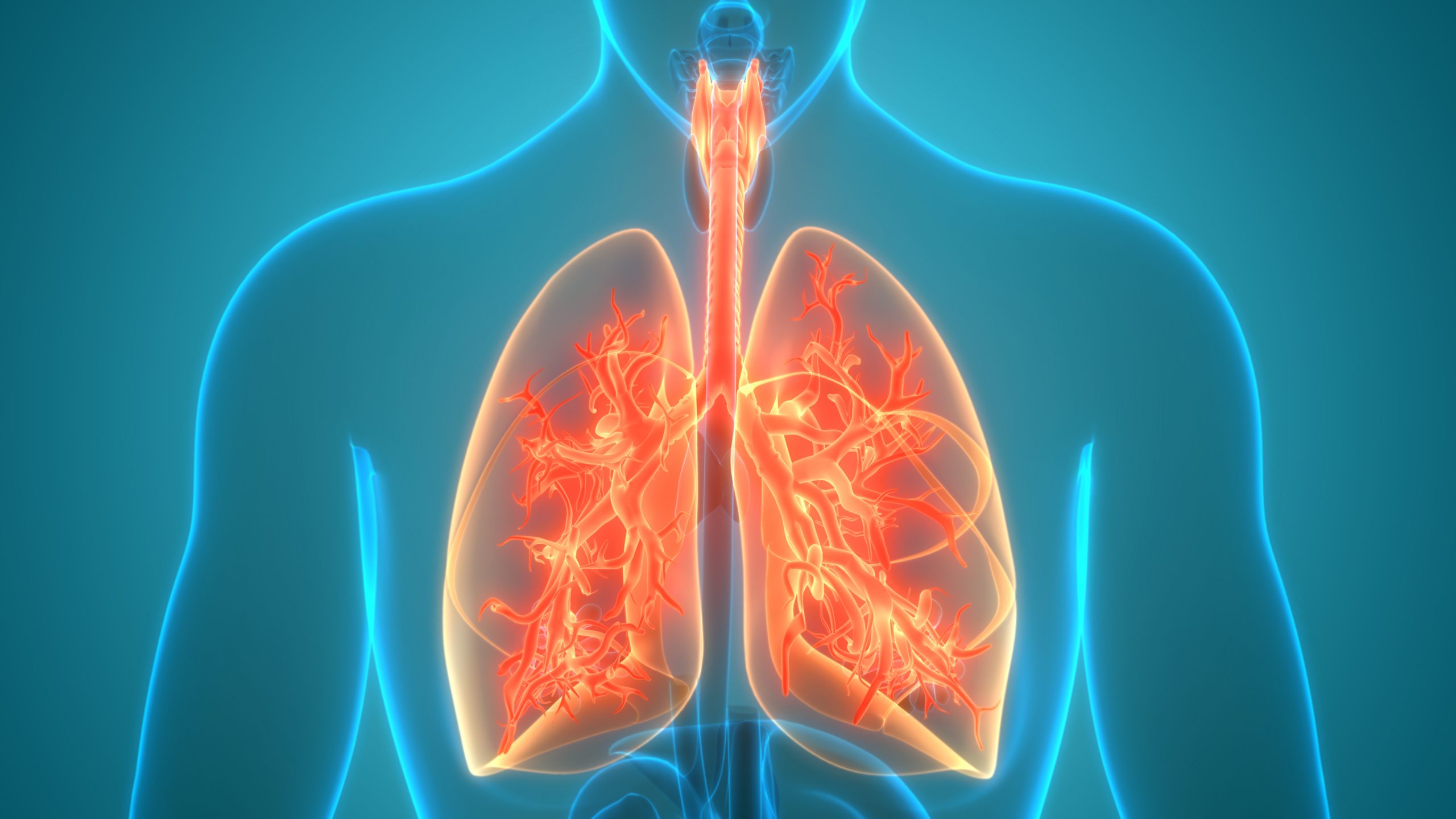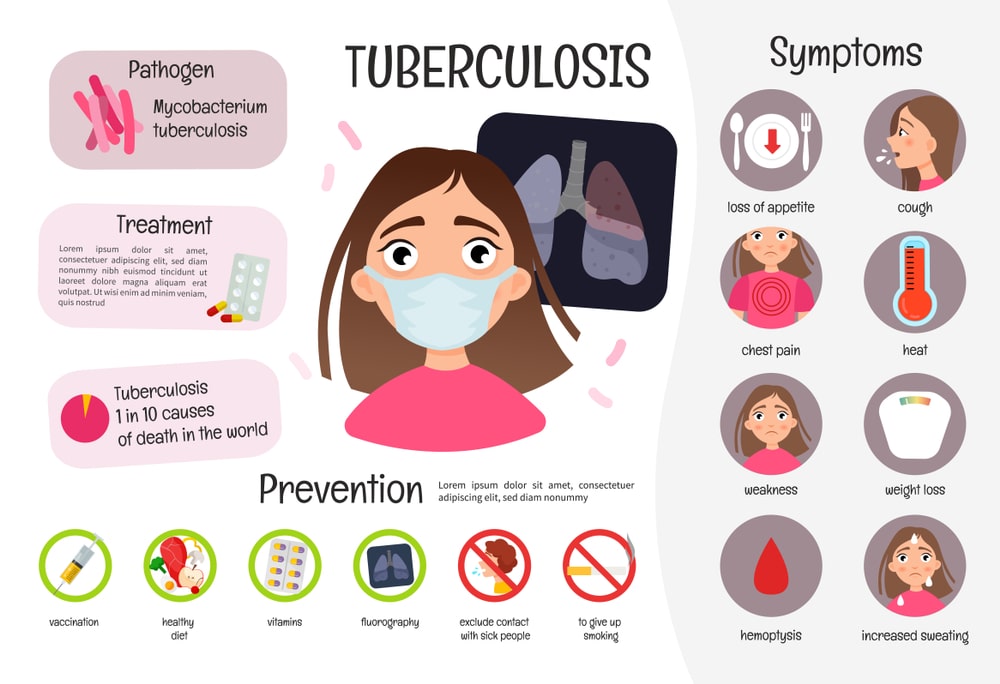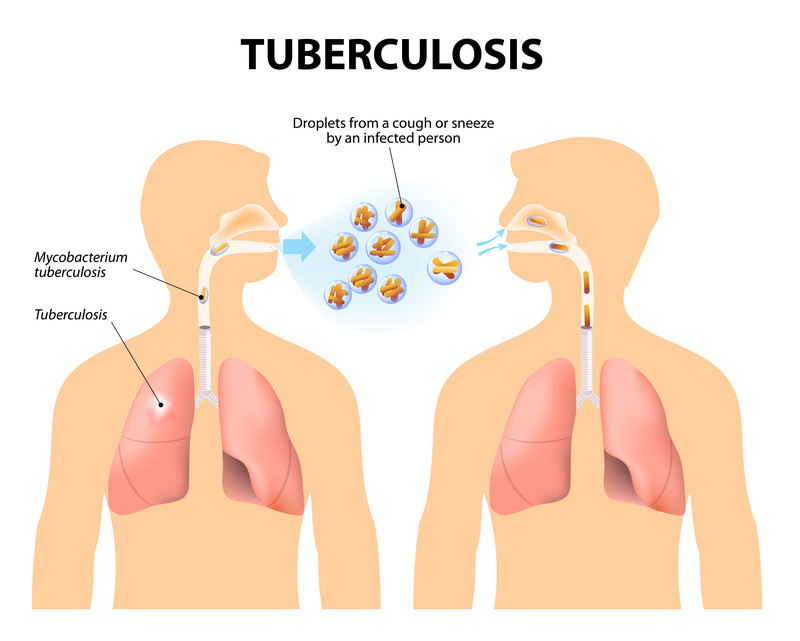
Tuberculosis, commonly known as TB, is an infectious disease caused by the bacterium Mycobacterium tuberculosis (Mtb). This bacterium usually infects the lungs, causing pulmonary tuberculosis, but it can also affect other organs in the body, such as the bones, urinary tract, nervous system, lymphatic system, and others, causing so-called extrapulmonary tuberculosis.
Tuberculosis is spread through the air when a person with active pulmonary tuberculosis releases the bacteria by coughing, sneezing, talking, or singing. These bacteria can remain in the air for long periods of time and infect other people who breathe in the contaminated air.
It is important to note that not everyone who is infected with the TB bacteria has active tuberculosis. Most infected people (about 90%) develop latent tuberculosis, when the bacteria are inactive and do not cause symptoms of the disease. These individuals are not contagious. However, latent TB can become active, especially when a person's immune system is weakened, such as by HIV infection, old age, or immunosuppressive therapy.
How is tuberculosis spread?
Tuberculosis (TB) is spread through the air when a person with active pulmonary tuberculosis releases the bacteria by coughing, sneezing, talking, or singing. TB bacteria (Mycobacterium tuberculosis) can remain in the air for several hours, which can be inhaled and thus infect other people.
When a person inhales TB bacteria, it passes through the respiratory tract and settles in the lungs, where it can begin to multiply. Although the immune system can often prevent active infection by forming a protective capsule around the bacteria and forming what is known as latent tuberculosis, in some cases the bacteria can remain viable and later become active when the immune system is weakened.
Although tuberculosis is contagious, it does not spread easily. It usually takes a long and close contact with a sick person to become infected. This means that tuberculosis is usually spread between family members, peers and work colleagues. That is why it is important to recognize and treat cases of tuberculosis as early as possible to prevent the spread of the disease.
The spread of tuberculosis may also be related to certain socioeconomic conditions. For example, tuberculosis is more common among people who live in poverty, have weak immune systems, or those who have limited access to health care. Tuberculosis is also more common among immigrants from countries where tuberculosis is common and among people living in closed collectives such as prisons or refugee camps.
Symptoms and signs of tuberculosis
Tuberculosis (TB) can cause a variety of symptoms that depend on where in the body the infection is. On the other hand, most people who are infected with the bacterium Mycobacterium tuberculosis initially develop latent tuberculosis, which causes no symptoms and is not contagious.
Pulmonary tuberculosis
When the infection affects the lungs (called pulmonary tuberculosis), the most common symptoms are:
A cough that lasts three weeks or longer
Coughing up blood or mucus
Chest pain or pain when breathing or coughing
Weakness or fatigue
Weight loss for no apparent reason
Night sweats
Fever
Extrapulmonary tuberculosis
When tuberculosis affects other parts of the body (called extrapulmonary tuberculosis), symptoms can vary depending on which part of the body is infected. For example:
Bone tuberculosis can cause pain in the affected part of the bone and possible fracture.
Kidney tuberculosis can cause bleeding in the urine or urinary tract infections.
Tuberculosis of the nervous system (brain or spine) can cause headache, loss of consciousness or paralysis.
In addition, those with TB may experience common symptoms such as fever, night sweats, weakness, fatigue, and unexplained weight loss.
Tuberculosis can be very serious, especially if left untreated. However, with timely diagnosis and proper treatment, most cases of tuberculosis are curable. It is important that people who experience any of the above symptoms seek medical attention.

Diagnosis and treatment of tuberculosis
Healthcare professionals use a variety of techniques to diagnose tuberculosis (TB). A primary test called the TB skin or Mantoux test is used to determine whether a person is infected with Mycobacterium tuberculosis. This test is done by injecting a small amount of TB protein (tuberculin) under the skin and watching for redness or swelling within 48-72 hours.
The presence of tuberculosis infection can also be determined using blood tests such as the QuantiFERON®-TB Gold Plus (QFT-Plus) and the T-SPOT®.TB test. These tests can detect the immune system's response to TB bacteria.
If the skin or blood test is positive, additional tests are needed to confirm whether the person has active TB disease. These tests may include an X-ray of the lungs and/or examination of samples (such as cough secretions) under a microscope.
Treatment of tuberculosis
Treatment for tuberculosis depends on the type of infection. Latent TB, in which the TB bacteria are present in the body but inactive, is usually treated with one or two drugs to prevent the bacteria from becoming active.
Treatment of active tuberculosis requires longer drug therapy. In most cases, treatment lasts at least six months and includes a combination of four different antibiotics - isoniazid, rifampicin, pyrazinamide and ethambutol - for the first two months, followed by another four months with isoniazid and rifampicin.
It is important to emphasize that during the treatment of tuberculosis, it is necessary to follow all the instructions and take all the medicines, even if the symptoms disappear. Stopping treatment prematurely can lead to bacterial resistance to drugs and the return of tuberculosis.
Resistance to tuberculosis
Drug resistance in tuberculosis (TB) is a growing health care problem worldwide. Drug resistance develops when TB bacteria mutate and become insensitive to a particular antibiotic. This can happen due to insufficient treatment, in which case the patient does not complete the entire course of treatment, or when ineffective drugs are used.
There are two main types of drug-resistant tuberculosis: multidrug-resistant tuberculosis (MDR-TB) and extensively drug-resistant tuberculosis (XDR-TB).
Multidrug-resistant tuberculosis is a form of tuberculosis that is resistant to at least two of the most important anti-tuberculosis drugs, isoniazid and rifampicin.
Extensively resistant tuberculosis is an even more severe form of resistance, as these TB bacteria are resistant not only to isoniazid and rifampicin, but also to at least one of the fluoroquinolones and at least one second-line injectable drug.
Drug resistance is a big problem because it makes TB much more difficult to treat. Resistant forms require longer and more complex treatment, which is not always successful and has more side effects.
The World Health Organization (WHO) and other health organizations are committed to combating TB drug resistance by promoting better diagnosis, development of new drugs, and better implementation of disease control strategies.

What can be the consequences of tuberculosis and the difficulties that arise?
Tuberculosis (TB) is a serious disease that can have long-term consequences for both personal health and public health.
Personal consequences
Tuberculosis, especially if not treated properly, can cause serious and long-term health problems. These consequences may include:
Lung damage. The lungs are most affected by tuberculosis, and the disease can cause long-term damage such as pulmonary fibrosis, lung failure, or pulmonary hemorrhage.
Damage to other organs. Although tuberculosis most commonly affects the lungs, it can spread to other organs, such as the kidneys, bones, or nervous system, and cause long-term damage.
Psychological burden. Tuberculosis can also have a psychological impact, causing stress, anxiety and depression about the disease, its treatment and long-term consequences.
Public health implications
In addition, tuberculosis also has a significant impact on public health. It is one of the leading causes of death in the world from an infectious disease, and its spread and difficulty in treatment, especially in drug-resistant forms, pose significant challenges to health care systems.
Tuberculosis can also have economic consequences, as the disease can reduce productivity and increase health care costs. What's more, it can lead to social exclusion for affected individuals.
Prevention and control
Prevention and control are essential elements in the management of tuberculosis (TB). Appropriate prevention and control can reduce the number of new cases, reduce the number of deaths and limit the spread of drug resistance.
Vaccines
The BCG vaccine (Bacillus Calmette-Guérin) is one of the main means of preventing TB. This vaccine is usually given to infants and children who live in high-risk areas for TB, and can protect against the most severe forms of TB in childhood.
Medical prophylaxis
Medical prophylaxis may be offered to people at high risk of TB, such as people who have recently been infected with TB bacteria or people with weakened immune systems. This therapy involves long-term use of antibiotics to prevent latent TB infection from developing into active TB disease.
Case detection and treatment
The fastest and most effective way to prevent the spread of tuberculosis is early detection and treatment. This means increasing capacity to test for TB in those who may be infected and ensuring that diagnosed patients receive appropriate treatment.
Infection control
Infection control is also an important aspect of TB prevention, especially in health care facilities and other places where the risk of infection is high. Infection control measures may include good air circulation, appropriate respirators for health care workers, and isolation of patients with active TB.

Tuberculosis is a complex infectious disease that has a significant impact on both individuals and societies worldwide. Although tuberculosis usually affects the lungs, it can spread to other organs, causing serious and long-term health consequences. In addition, TB can have a psychological impact, causing stress, anxiety and depression due to the disease, its treatment and long-term consequences.
Sources of information:
World Health Organization. (2022). Tuberculosis. https://www.who.int/news-room/fact-sheets/detail/tuberculosis
Centers for Disease Control and Prevention. (2022). TB Disease: General Information. https://www.cdc.gov/tb/topic/basics/default.htm
Mayo Clinic. (2021). Tuberculosis. https://www.mayoclinic.org/diseases-conditions/tuberculosis/symptoms-causes/syc-20351250
American Lung Association. (2022). Diagnosing Tuberculosis (TB). https://www.lung.org/lung-health-diseases/lung-disease-lookup/tuberculosis/diagnosing-tuberculosis
World Health Organization. (2023). Multidrug-resistant tuberculosis (MDR-TB). https://www.who.int/tb/areas-of-work/drug-resistant-tb/types/en/
Centers for Disease Control and Prevention. (2021). TB Prevention. https://www.cdc.gov/tb/topic/basics/prevention.htm
# tuberkuliozė
